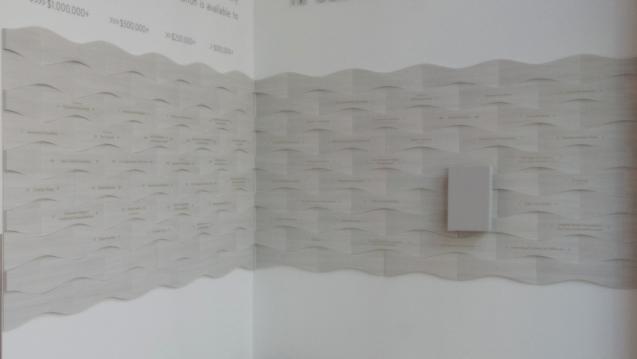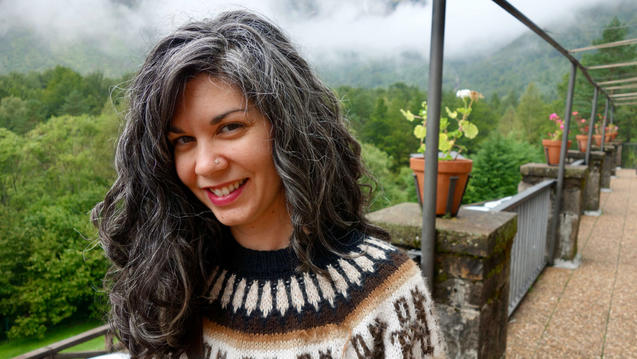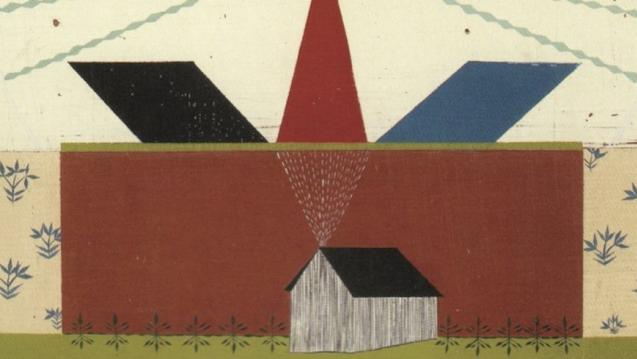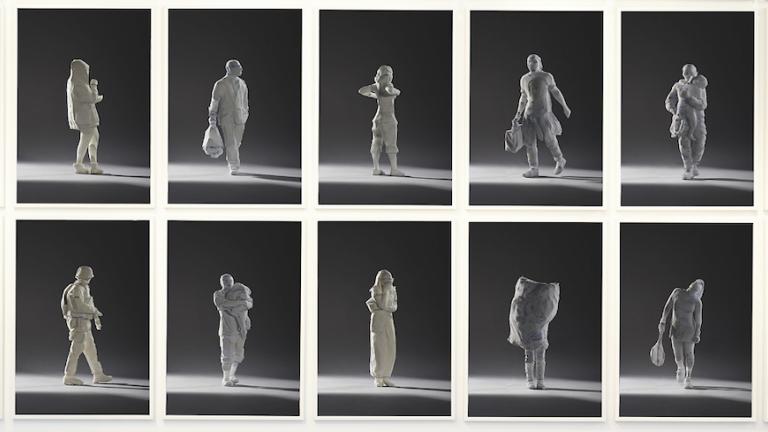
The Majestic Dimension of Chris Dorosz
CIIS Professors Carolyn Cooke and Brian Thomas Swimme discuss the work of Chris Dorosz, a multimedia artist whose Styrofoam sculptures portray modern figures.
This is the second of a two-part interview series celebrating the work of Chris Dorosz. The first, an interview with the artist himself, can be found here.
Early this spring The Arts at CIIS invited CIIS faculty members Carolyn Cooke and Brian Thomas Swimme to have a conversation about Chris Dorosz's project, Each has his or her own place in the procession. Cooke is the author of three works of fiction: The Bostons, Daughters of the Revolution, and Amor & Psycho. She teaches in the Department of Interdisciplinary Arts at CIIS. Swimme, a professor in the Philosophy, Cosmology, and Consciousness program, teamed up with Carolyn Cooke to create a new genre, “autocosmology,” art that explores autobiography as a manifestation of the fourteen-billion-year cosmogenesis.
A Fabulist and a Philosopher on the Majestic Dimension of Chris Dorosz...
Cooke: In Each has his or her place in the procession, Chris Dorosz invites us to wonder what makes humans human, what connects the individual to the cosmic whole. The taxonomy includes:
“Man rescuing dog during Hurricane Harvey Houston 2017”
“Recruit Knoxville TN Military Entrance Processing Station 2008”
“Princess Beatrice waiting outside Public nightclub London 2010”
As a philosopher and an evolutionary cosmologist, how would you describe the relationship between a Styrofoam maquette of a nightclubbing Princess Beatrice and the cosmos?
Swimme: The Styrofoam Princess Beatrice is a maquette of cosmic evolution. To understand this, we need to remember that conscious self-awareness emerges with humanity. With this in mind, we can appreciate the majestic dimension of Chris Dorosz’s work. This artist makes a bold declaration to the cosmos: “I am your mirror.” This does not come from grandiosity. Each figure has a place in the procession.
Cooke: “Humanness” isn’t just biology and chemistry, but also physical presence, gesture, and emotion.
Swimme: The full vision is ineffable. At most, one can experience an intuition that even something as tiny as a princess’s whereabouts fits into a vast scheme of meaning. This realization—that the whole is real, and is involved—is the foundation of all great works of art.
Cooke: Dorosz’s maquettes acknowledge the poignant specificity of experience. If I were a nonhuman being asked to extrapolate from these figures about what habits shape human awareness, I might notice a theme of persistence within the overarching fact of annihilation. Dorosz’s use of industrial Styrofoam suggests the scrappy, thermoplastic nature of human imagination. The Styrofoam is nicked and pocked and yellowed by time and handling. But the human-made substance persists, as Dorosz says, like bone.
Swimme: The fragility of the Styrofoam suggests an eternal value in our ordinary lives. Dorosz’s art enhances the intimacy of our relationships, and that is why it will travel through the centuries.
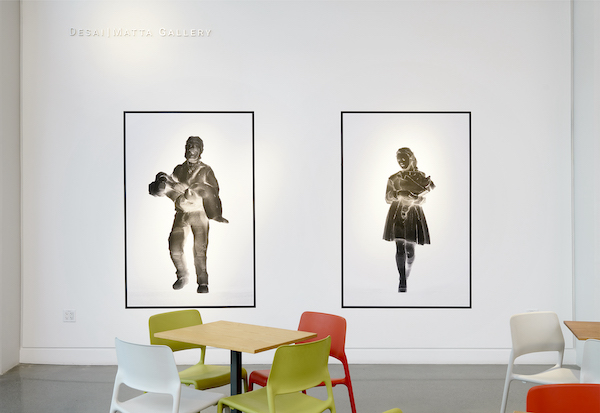
Cooke: The relationship of a man, a dog, and hurricane might not mean much to a thousand-year-old redwood tree, and yet that tree also exhibits persistence within the looming fact of mortality. The scale is different, but the tree, the man, the dog, the hurricane, and even Princess Beatrice in her tiny, temporary royalty, are all part of a whole. Do you think that this is how we recognize art when we see it—as a mirror of or a glimpse into the ineffable? Does the “majestic dimension” of art like this have anything to do with its being constructed of throwaway, single-use materials?
Swimme: Yes, exactly right. The majestic theme of Dorosz’s work is persistence within the looming fact of mortality. We delight in the theme because it cuts into our essence. We humans are a desire to persist, even though we find ourselves inside the looming fact. Do I write these reflections because I care about a “Man rescuing dog during Hurricane Harvey Houston 2017?” Not exactly. I write for the joy of being in relationship with you. Even if this is my last day. There is the meaning of “Man rescuing dog during Hurricane Harvey Houston 2017.”
Cooke: You raise the great question: how to spend time even if this is my last day. And especially if this is my last day! I want to spend mine like Chris Dorosz, or as I understand your proposal, in devotion and defiance: devotion to something time-consuming, like carving figures or writing the unsayable, and in defiance of the Looming Fact. The important thing about our limited time, it seems to me, is to spend it willfully.
Swimme: I felt it yesterday at Safeway. The cashier looked at my cart, which was filled with nothing but firewood, and her eyebrows shot up. I thought, “Dorosz would see eternity right there.” That gesture, too, belongs in the ultimate, unfinished taxonomy. It took all Dorosz’s devotion to give expression to the unsayable insight that eternity rides in each anatomical gesture.
Cooke: Maybe what “travels through centuries” in a work of art is that schmear of willful human time and attention. One of my favorite residues of Dorosz’s project is the box of maquettes piled up together. This is what fourteen years of devotion and defiance can look like: a lesson in value.
Swimme: I think Dorosz would agree that “devotion” describes the monastic practice that led to these Styrofoam pieces. This devotion began well before Dorosz. Styrofoam exists only because its ancestral chemical, benzene, came forth in volcanoes. Earth could build volcanos only because stars constructed the elements like carbon, phosphorous, and oxygen. Fourteen billion years went into the construction of this remarkable Procession. Styrofoam is ephemeral, but in Dorosz’s hands it can awaken an insight into the unsayable, one so intense life is forever changed.
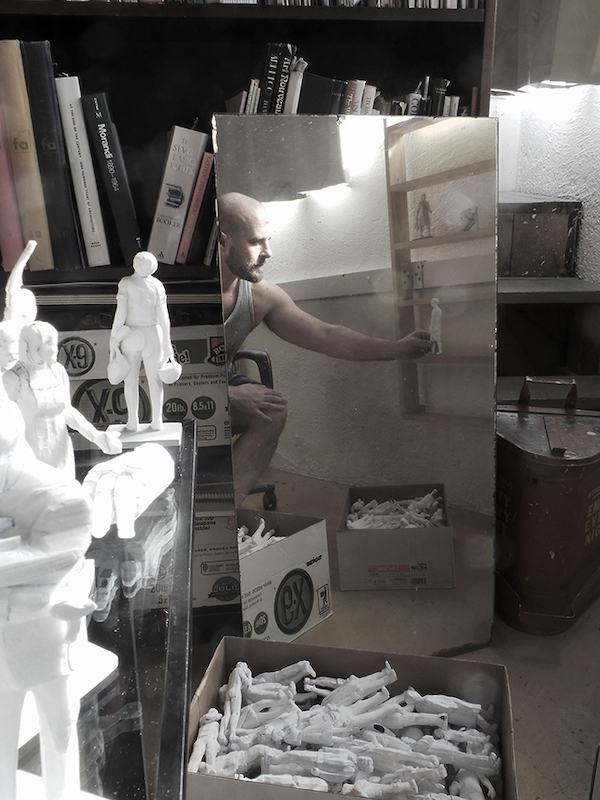
Chris Dorosz is a Canadian-American artist who divides his time between San Francisco and Winnipeg. Dorosz has cultivated a hybrid painting-sculpture-photographic practice through which he explores the mutability of the physical world. He has exhibited across North America in solo exhibitions including the San Jose Institute of Contemporary Art, Mission 17 Gallery in San Francisco, the Canadian Clay and Glass Museum and Plug-In Gallery in Winnipeg. His work has also been featured in numerous group shows, including at the Royal College of Art in Edinburgh, the Southeastern Center for Contemporary Art in Winston-Salem and Mount St. Vincent University Art Gallery in Halifax.
Dorosz is currently a professor at the Academy of Art University in San Francisco where he teaches color theory.

